Is Kanazawa worth a Visit?
Kanazawa hit the travel sections in March 2015 with the opening of a new shinkansen (bullet train) line going there from Tokyo. It cut the travel time to less than two and half hours, which makes a Kanazawa day trip a viable option. I’d never heard of it before, but that coverage led me to add visiting Kanazawa to my plans. Is Kanazawa worth a visit?
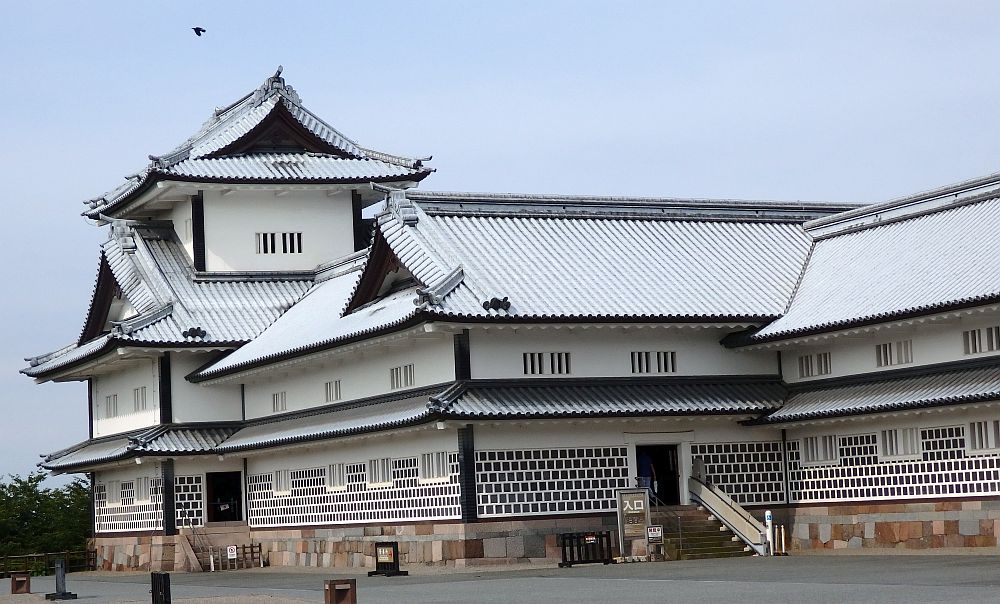
Kanazawa, I read, has a spectacular garden, considered one of the best in Japan, especially at cherry blossom time, and also a pretty castle. Right across the road from each other, both sounded like pleasant places to visit, even if I wouldn’t be there at cherry blossom time.
Disclosure: This article contains affiliate links. That means I’ll receive a small commission on anything you buy through clicking the links. This will not affect your price.
Kanazawa Castle Park
Kanazawa Castle isn’t actually a castle. A reconstruction of some other castle compound buildings, it was completed as recently as 2015. A litany of fires and earthquakes have repeatedly destroyed buildings here through its history. The last of them burnt down in 1881.

The new buildings, the largest of which is a long, massive workshop, were rebuilt using the original techniques and materials, except for modernizations such as concrete foundation, elevators and ramps for the disabled, fire prevention systems, and so on.
I was disappointed, though. The resulting buildings are interesting from an architectural point of view, but they have no life in them. They’re too new and neat to feel real. Walking barefoot through the buildings, my feet didn’t feel the history in the floor as I did, for example, at Matsumoto and Himeji. It was too hard and smooth and solid.
Exhibits along the walking route inside give more detail than anyone but the most fanatical construction hobbyist would ever need about the reconstruction. For example, you can see models, cross-sections of walls, a display about the roofing tiles, and so on.
I’m not an architecture maven. I’m more interested in the end result than the process of getting there, so I gave most of these exhibits a miss.
Kenrokuen Garden
Kenrokuen Garden is the main draw of Kanazawa. It’s right next to the castle, connected by a bridge over a road. The gate over the bridge dates to the 18th century, and it’s one of the only original structures that remain.
Originally, Kenrokuen Garden was the outer garden to the castle. It is said to combine “six attributes of a perfect landscape garden: spaciousness, seclusion, artifice, antiquity, watercourses and panoramas.”
It’s true; it’s got all six, except maybe the seclusion part. I’m sure it had that originally, when only the royals and their guests could enjoy it.
This is a very extensive Japanese-style garden, comprising arbors, ponds with teahouses, an orchard, shrines, and pretty much everything else you can think of for a garden. Especially if you are a gardening enthusiast, you could easily spend a whole day here.
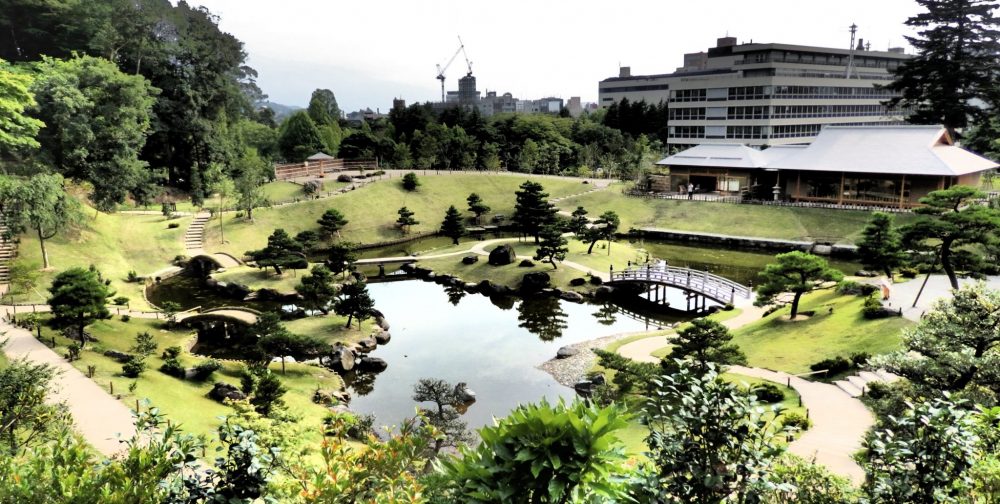
I visited on a Sunday, and Kenruoken is clearly a family destination as well: crowded and not particularly peaceful. If you want peace and quiet to contemplate the garden and its design, I’d suggest a weekday during school time.
Kenrokuen Garden is also home to Seisenkaku Villa, an “important cultural asset.” This upper-class villa dates to 1863 when Maeda Nariyasu, the 13th lord of the Kaga clan, built it for his mother.
While their personal history isn’t particularly interesting, the house differs from other historic houses I visited in Japan—either royal or otherwise—in terms of the interior design. The layout is traditional, with wood-floored rooms separated with shoji screens, the typical wood sliding doors with rice-paper panels. But this villa contains detailed paintwork and woodwork so that each room carries a subtly different theme. Upstairs each ceiling has a different pattern and some are painted in quite startling colors.
Here are some other articles you might enjoy:
Outside Kenrokuen Garden
Kanazawa is a very spread-out city if you want to see some of these other worthwhile sights:
Nagamachi
I visited Nagamachi, the neighborhood where the Samurai lived, briefly. Surrounded by neat, high, mud walls, it’s a pleasant place for a stroll, though because of the walls you can only catch occasional glimpses of the houses themselves.
Higashi Chayagai
This is the old district where the geisha lived and entertained. Many former homes are now shops and a few are small museums.
The Omi-cho market
The Omi-cho market is a warren of covered alleys, each section selling different produce and products: fish, fruit, vegetables, cloth, and everything else you can imagine.
Myoryuji Temple
I didn’t get to Myoryuji Temple, but it sounds interesting. Containing hidden defenses, this temple could warn the castle in case of attack.
Getting around Kanazawa
Fortunately, you don’t have to waste lots of time catching buses between sights. You can rent a bike in Kanazawa for almost nothing on their shared-bike scheme. You pay 200 yen per day, then nothing more as long as you return the bike to one of their parking stations within 30 minutes. Otherwise it’ll cost you another 200 yen per additional 30 minutes. The parking racks are scattered around the city, so I never ended up paying more than that initial 200 yen, and was able to get around quite easily. In most places you’ll have to bike on the sidewalks, sharing with the pedestrians.
The only disadvantage to this scheme, though, is if you’re tall. I’m about 5’7” or 170 cm, and the bikes weren’t quite high enough for me, even when I set the saddle as high as it would go. Since Kanazawa is fairly hilly, this could be hard on your knees!
Other things to see in Kanazawa
Since I only did Kanazawa as a one-day trip, I didn’t exhaust all the tourism possibilities. Quite a few museums are nearby Kenrokuen Garden and Kanazawa Castle:
- Ishikawa Prefectural Museum of Art is focused on the arts and crafts of Ishikawa prefecture. Near the southwest corner of Kenrokuen Garden. Open daily 9:30-18:00. Admission: ¥370 (€3 / $3.50).
- Ishikawa Prefectural History Museum covers Ishikawa prefecture’s history from prehistory to the present. Next to the Ishikawa Prefectural Museum of Art, near the southwest corner of Kenrokuen Garden. Open daily 9:00-17:00. Admission ¥300 (€2.50 / $2.75).
- Ishikawa Prefectural Museum of Traditional Arts and Crafts covers 36 different local crafts. It is right next to Seisenkaku, inside Kenrokuen Garden. Open 9:00-17:00. Admission: The first floor is free, but the second floor is ¥260 (€2.15 / $2.40).
- 21st century Museum of Contemporary Art covers, of course, contemporary art and is housed in a very contemporary building. It is at southern end of the line (and road) dividing Kenrokuen Garden and the castle gardens. Exhibitions open Sunday-Thursday 10:00-18:00 and Friday-Saturday 10:00-20:00. The public areas are open daily 9:00-22:00. Admission: depends on the exhibitions being shown.
- Kanazawa Noh Museum: about traditional Japanese Noh theater. Next to the 21st century Museum of Contemporary Art, across the street from the castle grounds. Open Tuesday-Sunday 10:00-18:00. Admission: ¥310 (€2.50 / $2.80), or a combined ticket with the contemporary art museum next door is ¥570 (€4.70 or $5.20).
So is Kanazawa worth a visit?
It depends. If you love Japanese gardens or have a particular interest in architecture, then definitely, yes. Even if you don’t, I enjoyed my day there, but felt like that one day was enough. If you don’t have much time, I’d skip it and see other more impressive sights like Nikko or Himeji instead.
Information for visiting Kanazawa
Getting there: The easiest and quickest way to get to Kanazawa from Tokyo is to take the Shinkansen (high speed) train from Tokyo Station. Read my article on navigating Japan Rail for help with figuring out how to get there.
Getting around: As mentioned above, the shared bike scheme is probably your best bet, rather than trying to figure out the local bus system. Having said that, there are buses straight from the train station to Kanazawa Castle Park or Kenrokuen Gardens. Or, assuming you don’t mind a walk, Kanazawa Castle Park is about a half-hour walk from the train station.
If you don’t want to bike or to have to deal with the bus system, GetYourGuide offers a number of tours in Kanazawa.
Kanazawa Castle Park: Open March 1-October 15 from 7-18:00 and October 16-February 28/29 from 8-17:00. Admission to the grounds is free, but to enter the buildings costs ¥320 (€2.60 or $3).
Kenrokuen Garden: Same hours and days as the castle park. Admission: ¥320 (€2.60 or $3).
Both Kanazawa Castle Park and Kenrokuen Garden have early admission hours which are free of charge. However, you then have to leave before the regular opening time. Hours: In March, September and October from 5:00; April-August from 4:00; November-February from 6:00.
If you decide that Kanazawa is worth a visit, but a Kanazawa day trip won’t give you enough time, stay a night or two. You can book your hotel through booking.com here.
If you liked this post, please share it! The image below is perfect for pinning!
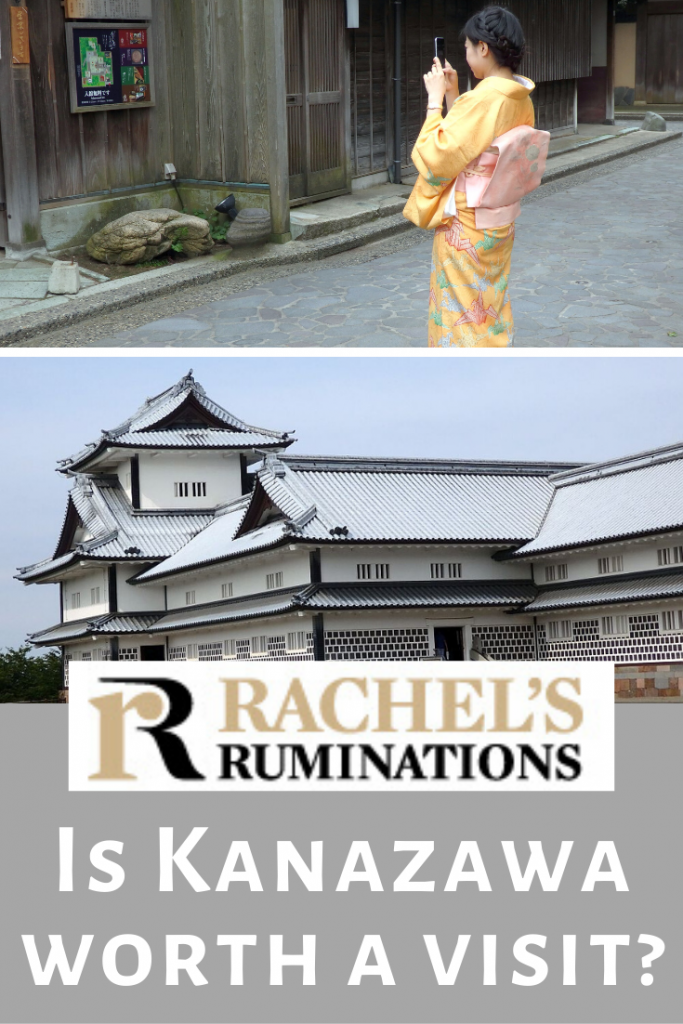

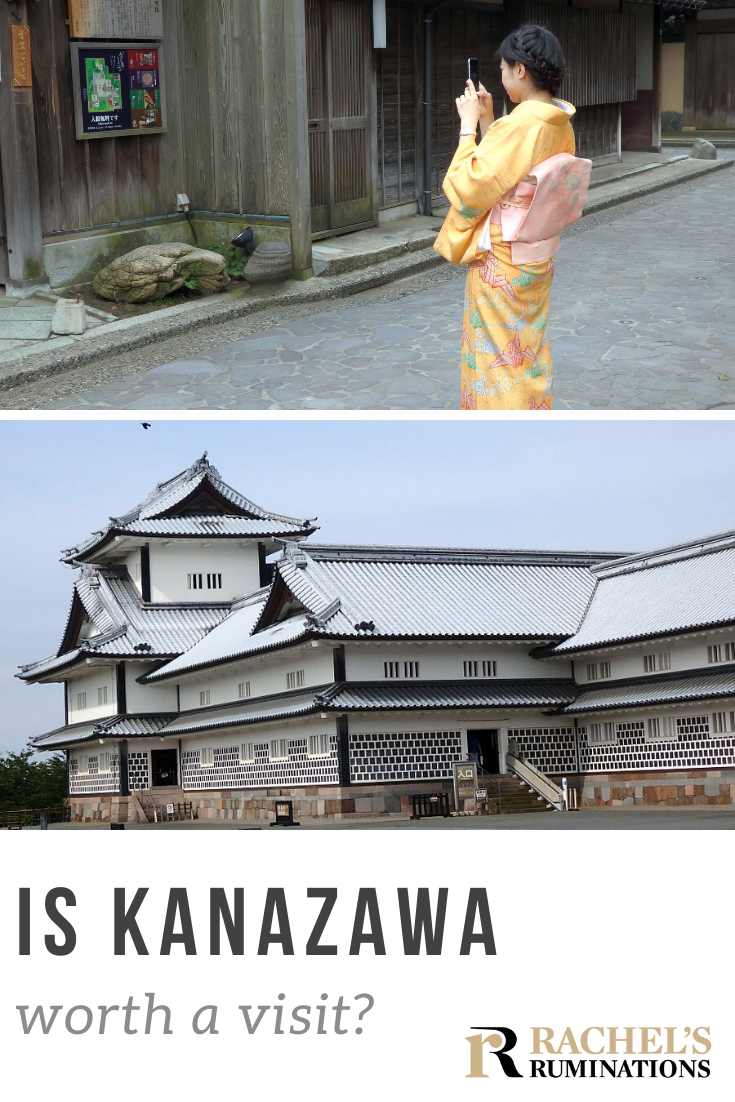
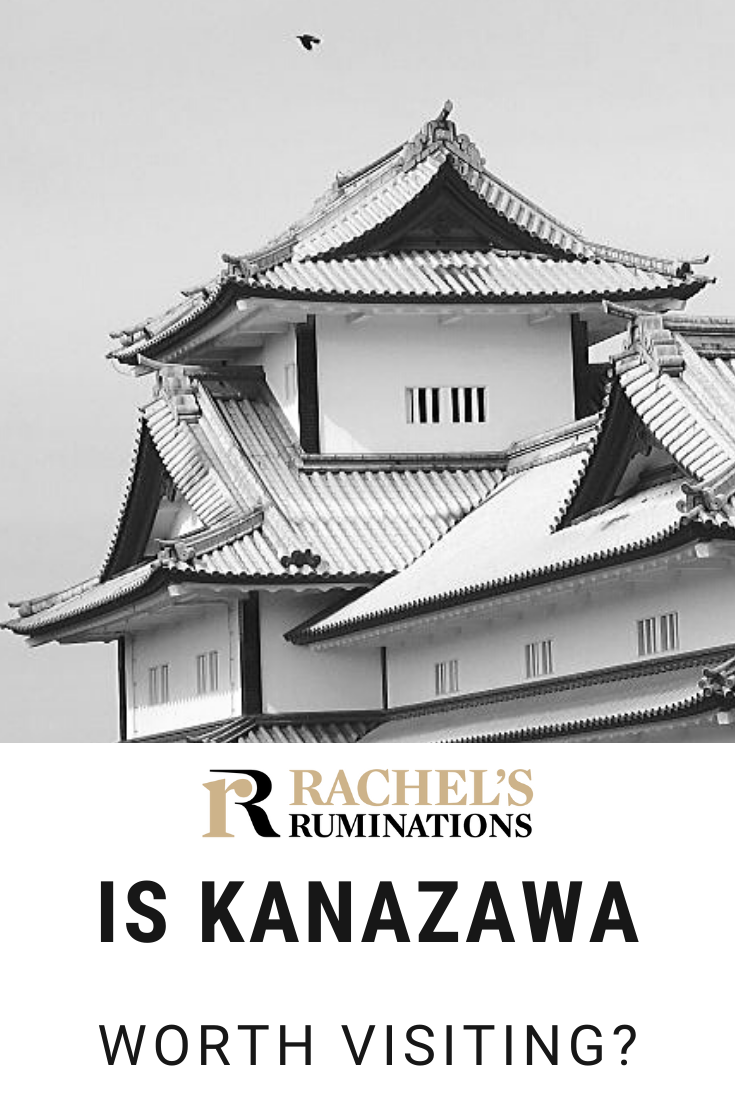
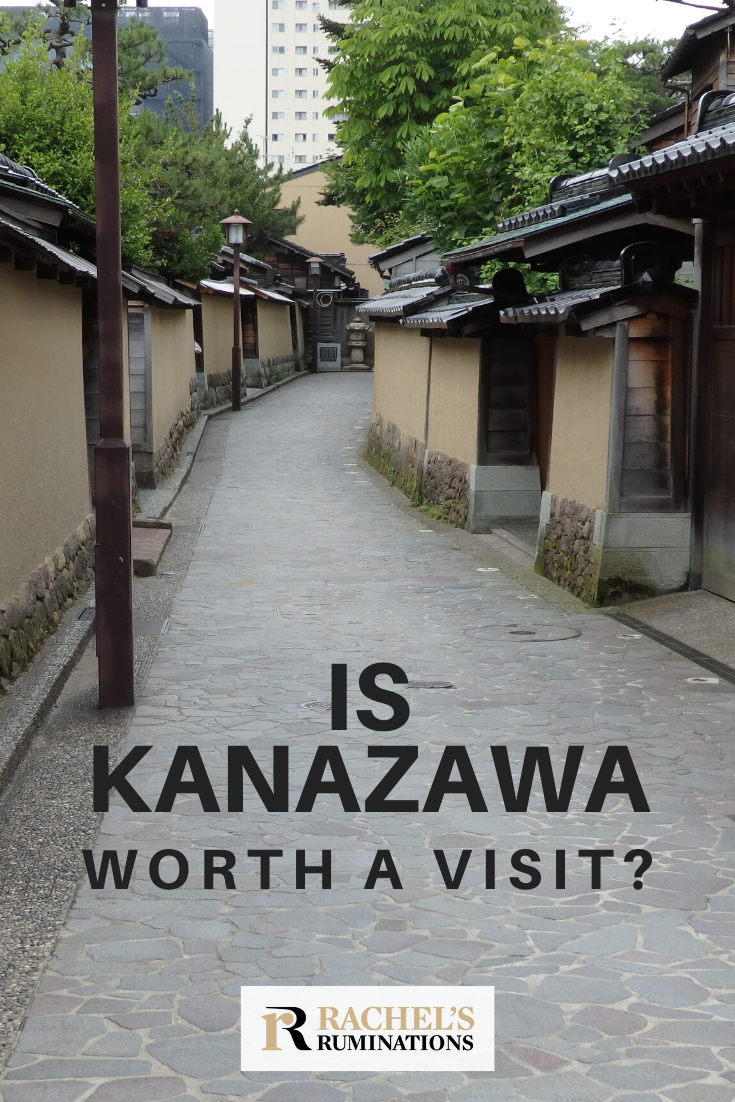
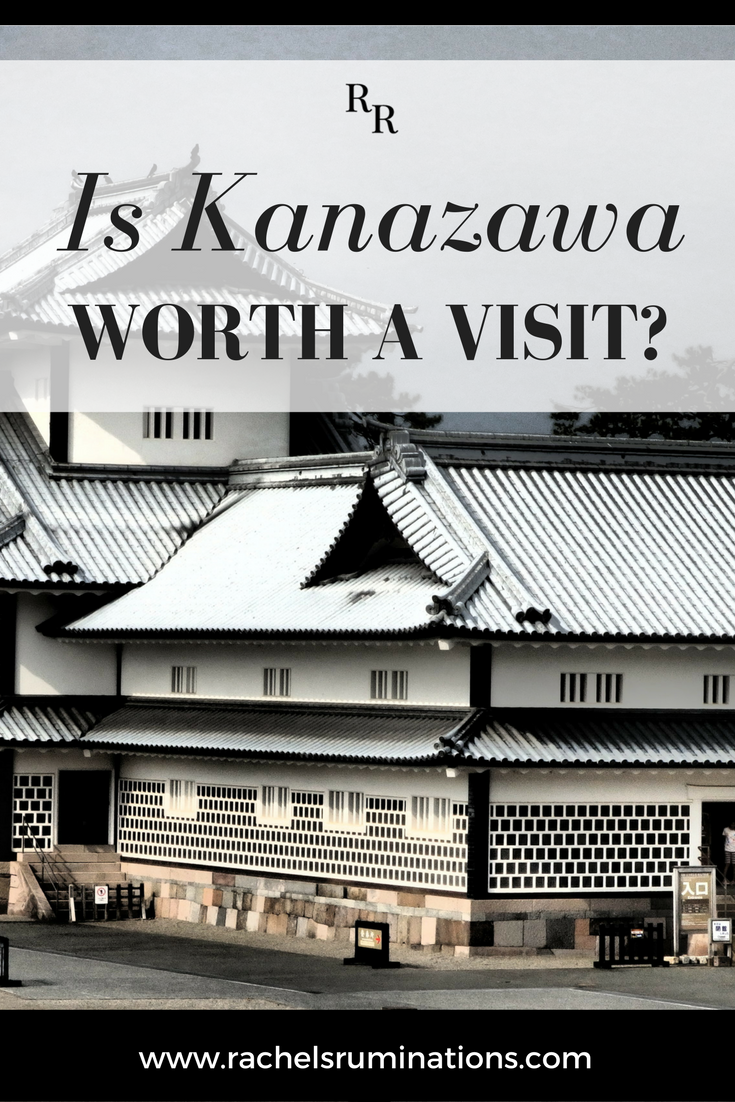
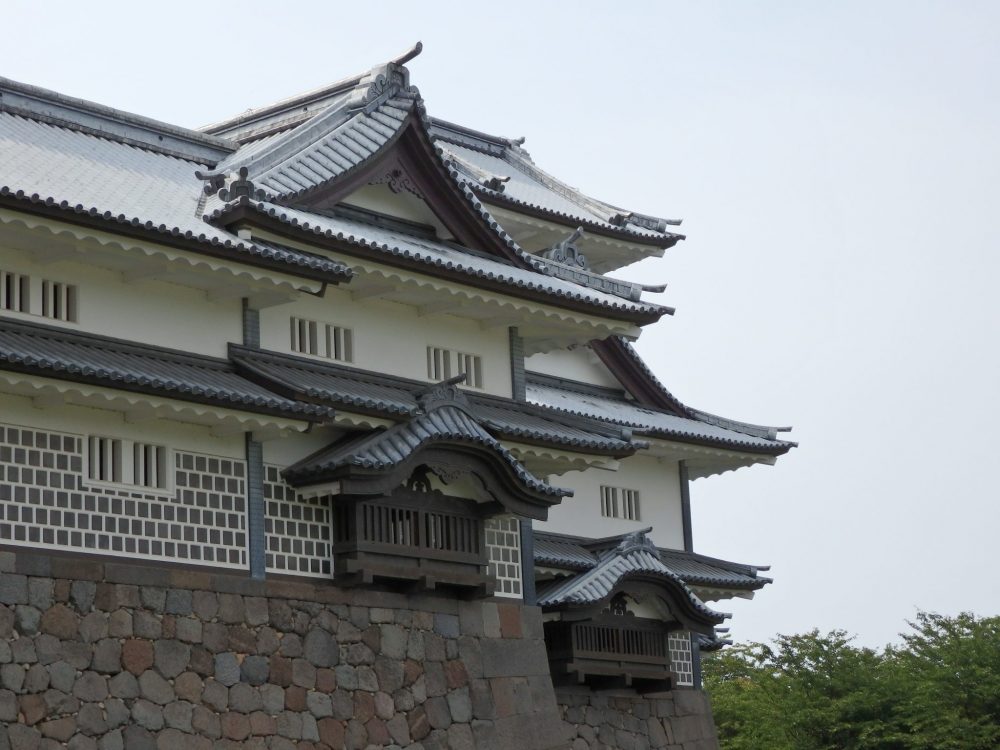
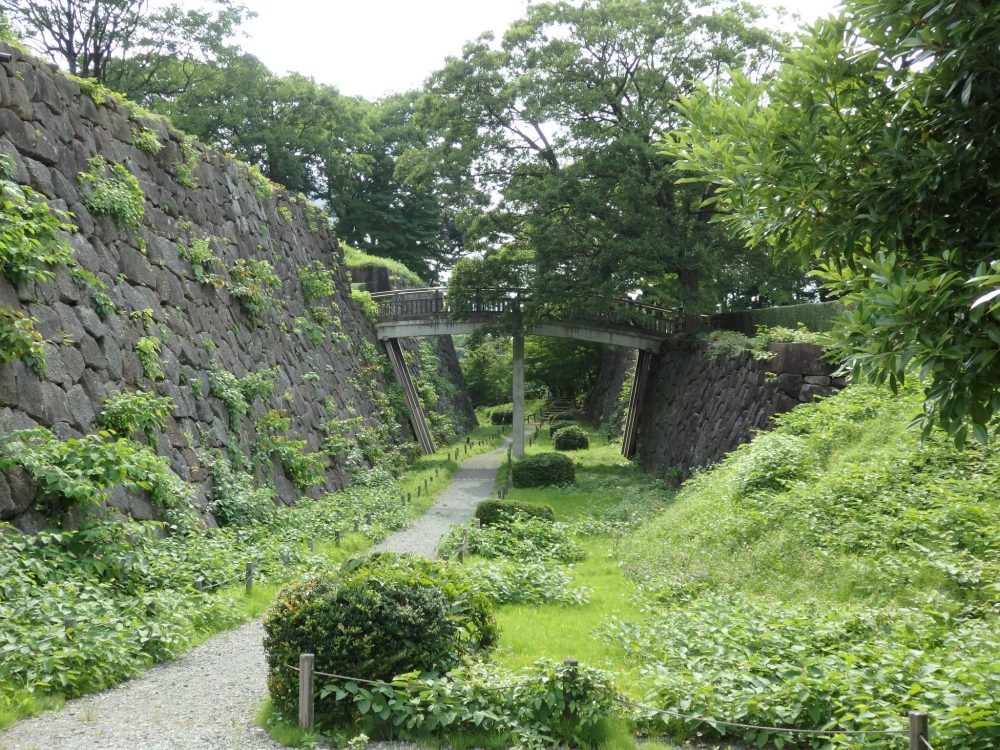
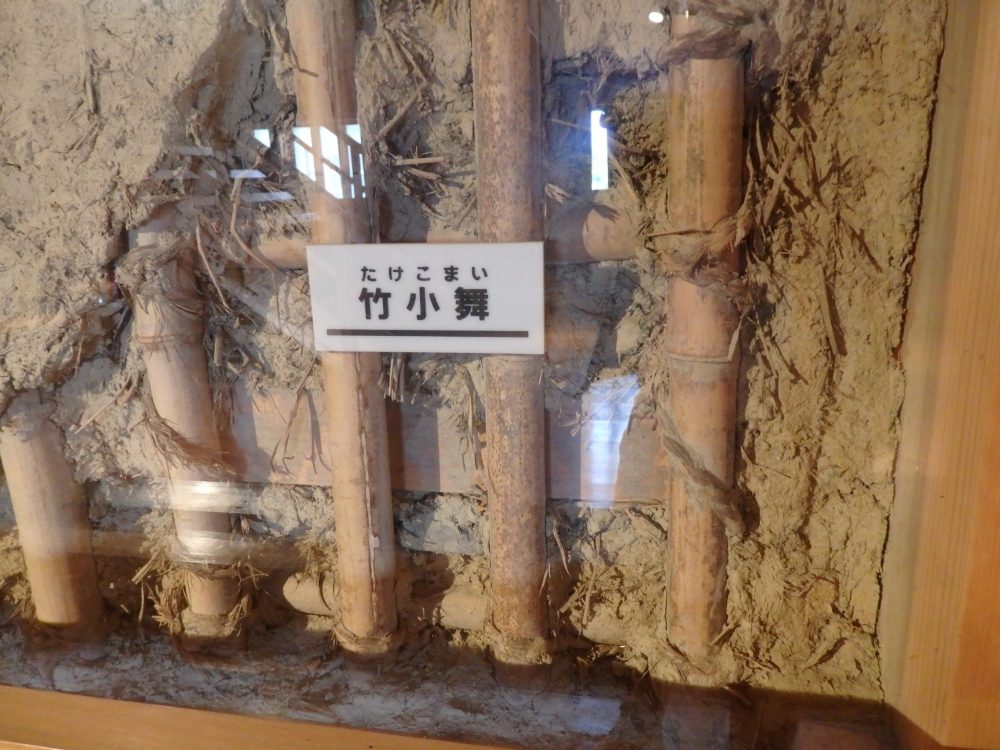
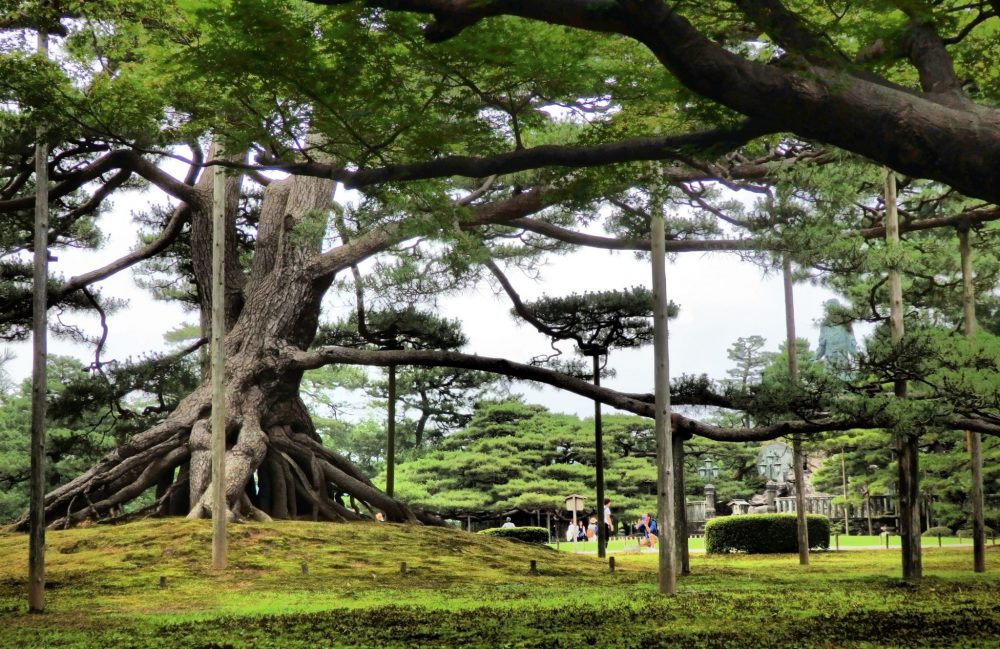
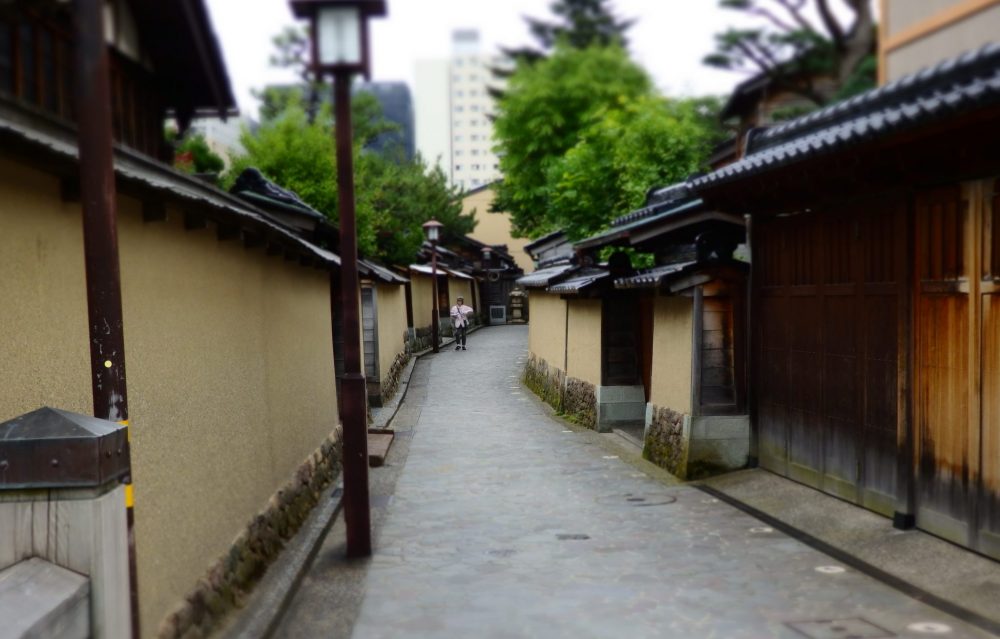
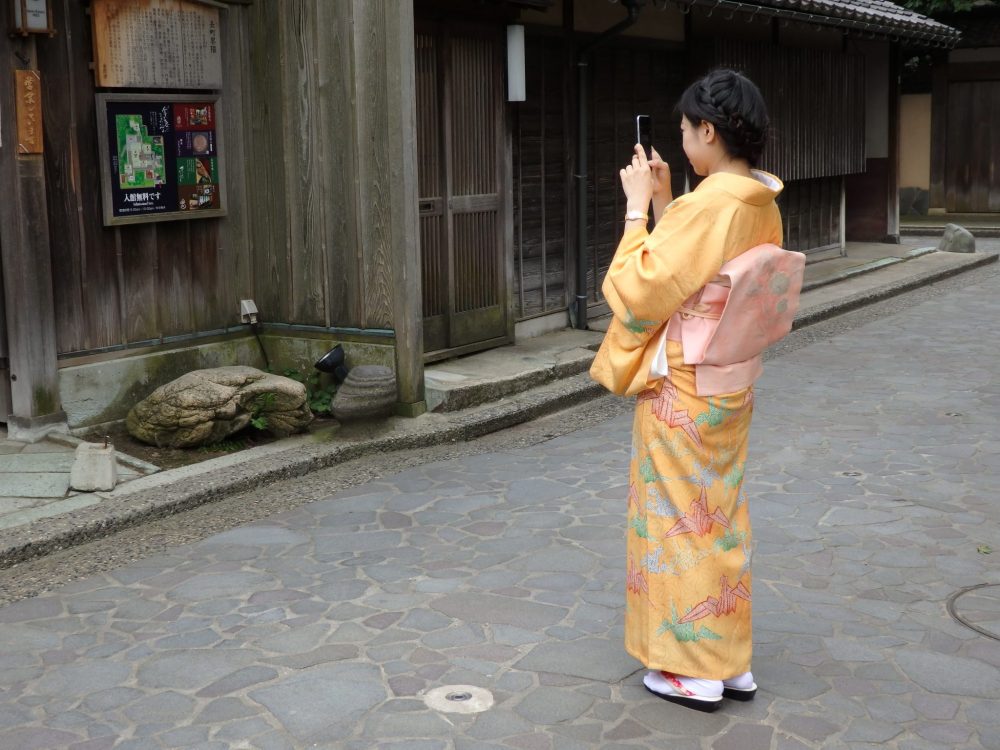
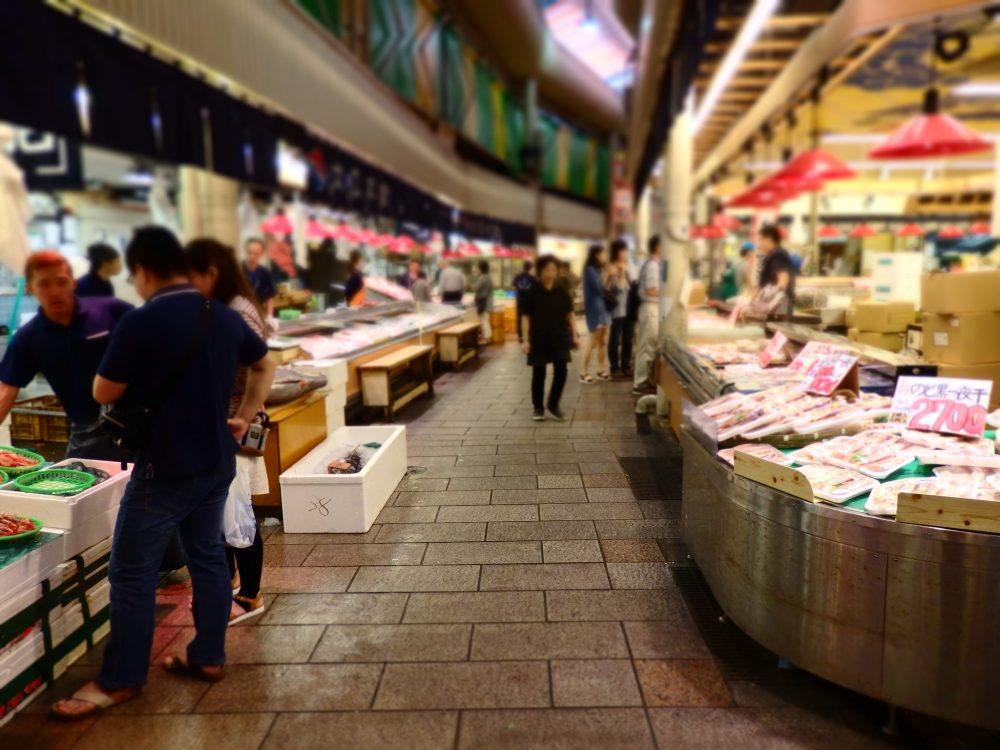

I never made it to Kanazawa but agree Nikko and Himeji are fabulous. Great tip about the bike – that makes it all so much easier to get around.
I wish more cities had a system like that! And this one was really easy to sign up for at the machine at one of the bike stations. It took me a while to figure out that I needed a local telephone number (I used my Airbnb host’s number.) but otherwise it was very straightforward.
I loved my visit to Kanazawa and I agree, the castle even though it was done to precise reconstruction, lack character and something authentic about it. But it does look striking in the distance.
Yes, that’s true. If you’re out to see a castle, I’d recommend Himeji!
I’d say Kanazawa is definitely worth a visit. The castle looks interesting even if new, though I did particularly like the image of the moat, and how convenient to have Kenrokuen Garden right across the way. The town looking charming as well. All good for at least an overnight.
Only certain parts of Kanazawa are so charming. A lot of what I bicycled through to get to, for example, the market or Nagamachi, was a typical modern, busy city and not attractive. The interesting sections, outside of the castle and the garden, are far separated from each other.
I’ve not heard of Kanazawa before, but it sounds to me like it is worth a visit even if one might want to bypass the castle. I would definitely enjoy the gardens, although I might prefer them on a quieter weekday.
I had never heard of it until they opened that shinkansen train line, which I think was last spring or winter. There were several blog posts and newspaper articles about it at the time which made me want to see it. Definitely try for a weekday during their school year!
We didn’t go to Kanazawa though we thought about it when we were in Takayama. Maybe we should have but then again, we saw so many amazing things in Takayama and Shinakawa-go.
I didn’t go to Shinakawa-go but I did visit Takayama. Unless you’re particularly into gardens, I’d recommend Takayama over Kanazawa.
Love your photos, Rachel! Kanazawa does sound worth the visit for the Kenrokuen Garden and Seisenkaku Villa. And I’d definitely be up for visiting former neighborhoods of samurai and geisha.
Thanks, Lesley! I agree, Kanazawa might be worth it for the garden and the villa, but not so much for the castle, or, rather, not if you have the time to see Himeji or Matsumoto!
Thx for this review, Rachel. You’ve certainly been having quite the adventure in Japan! Thx for sharing it with us.
You’re welcome, Doreen! I’m actually not in Japan anymore. I decided to stick to my twice-a-week schedule of posting even though I was writing much more than that. So I have posts about Japan and Korea lined up and scheduled well into October! I’m home in the Netherlands and back to my “real job” now!
Hi Rachel,
I really love your blog about Kanazawa. I plant to visit Kanazawa especially the Kenrokuen garden with my wife and a young daughter but I am not sure is it worth to stay in Kanazawa just for the garden? Should we just do a day trip from Kyoto instead? Or should I just forget it.
Thanks.
With a small child, I wouldn’t, unless you and she are particular garden fans. She’d enjoy it, I’m sure; it’s very child-friendly. But it’s something like two or 2 1/2 hours on the train each way, and I’m skeptical it’s worth it. Why not try some of the gardens in and around Kyoto? I just found this post about it: https://www.insidekyoto.com/kyotos-best-gardens. Enjoy!